Parsnip Fritters
Katie Maxwell, Visitor Services and Design Coordinator
My favorite vegetables are parsnips—root vegetables that look like pale carrots, but with a spiced, sweet flavor. I usually just roast them with some olive oil, salt and pepper, but 19th-century writer Mary Foote Henderson included a more elaborate technique in her 1877 book Practical Cooking and Dinner Giving (pg 196).
This is undoubtedly the best manner of cooking parsnips : Scrape, and, if large, cut them ; put them into well-salted boiling water, and boil until tender ; then mash them, adding to four or five parsnips a heaping teaspoonful of flour, one or two eggs well beaten, pepper and salt to taste. Form the mixture into small cakes three-quarters of an inch thick and two and a half inches in diameter, and fry them on both sides to a delicate brown in a sauté pan, with a little hot butter. Serve hot.
Although Henderson did not list the ingredients separately, I have extracted them for your convenience:
Four or five parsnips
Heaping teaspoonful of flour*
One or two eggs
Pepper and salt to taste
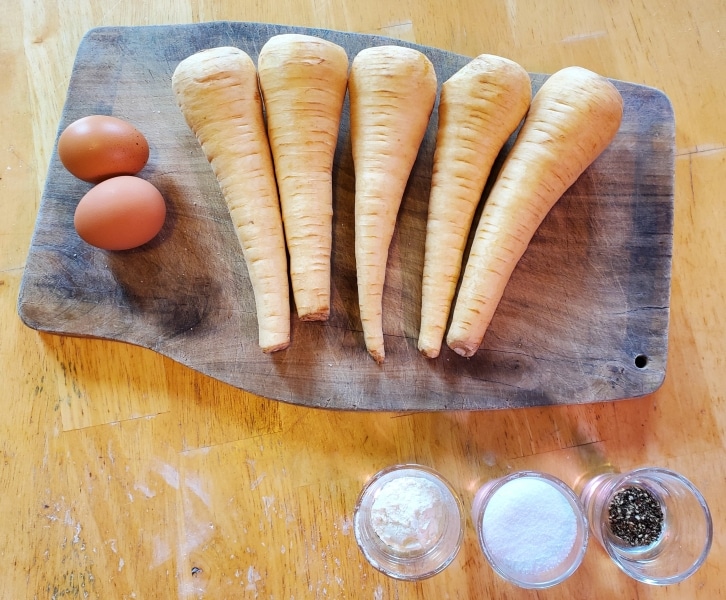
* I think this teaspoon is “heaping”

Scrape, and, if large, cut them
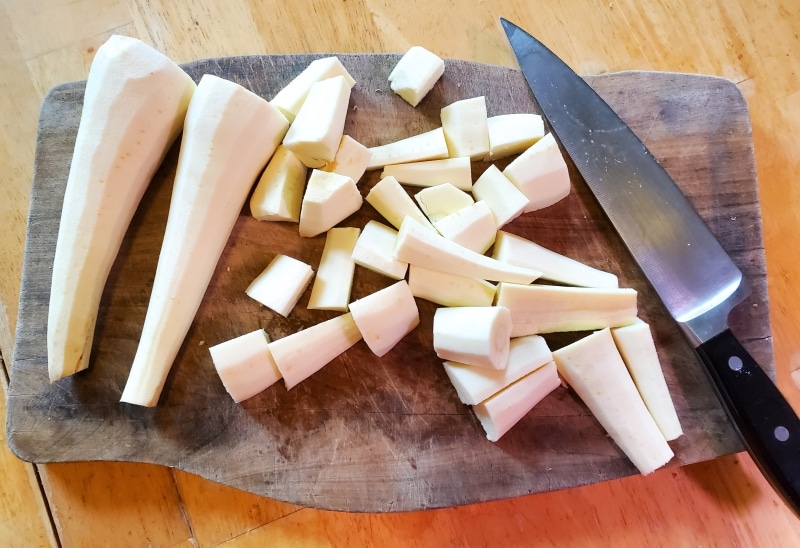
I think it is very safe to assume that “scrape” means “peal.” I’m less sure how to determine if my parsnips are large by 19th-century standards, so I’m attempting to cut them into evenly sized chunks.
put them into well-salted boiling water, and boil until tender ;
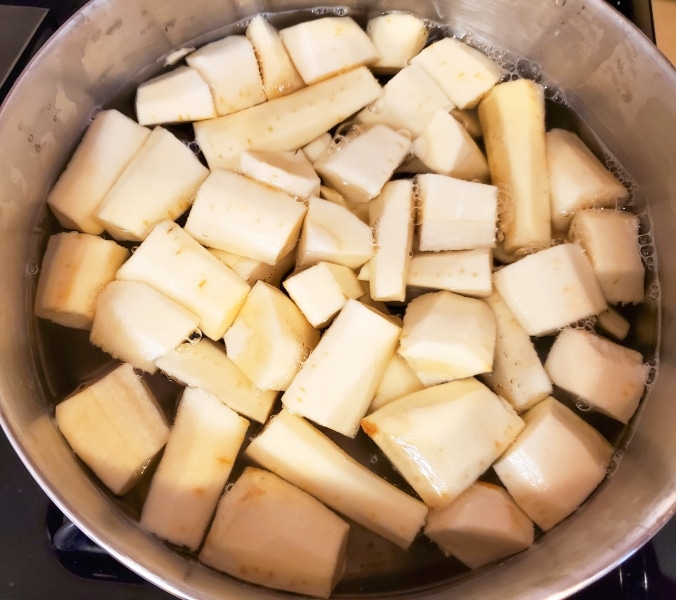
I periodically jab the boiling parsnips with a fork until they seem mashable.
then mash them,

I’m attempting a mashed-potato-like consistency—results may very
adding to four or five parsnips a heaping teaspoonful of flour, one or two eggs well beaten, pepper and salt to taste.
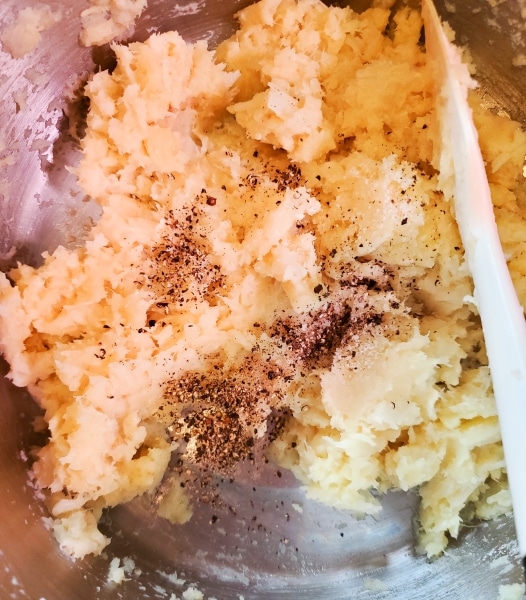
I almost forgot the eggs
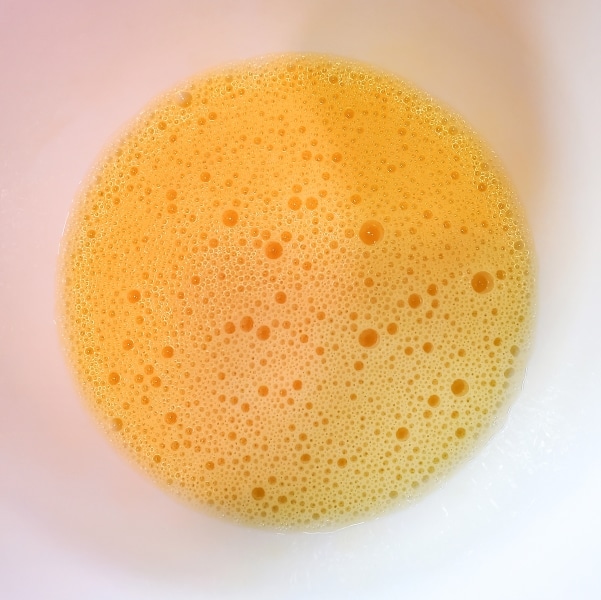
Whenever a recipe calls for “well-beaten eggs”, my goal is to whisk them until they are frothy. Now it is time to:
Form the mixture into small cakes three-quarters of an inch thick and two and a half inches in diameter,

The wet parsnip mixture is a bit tricky to form into little cakes
and fry them on both sides to a delicate brown in a sauté pan, with a little hot butter.
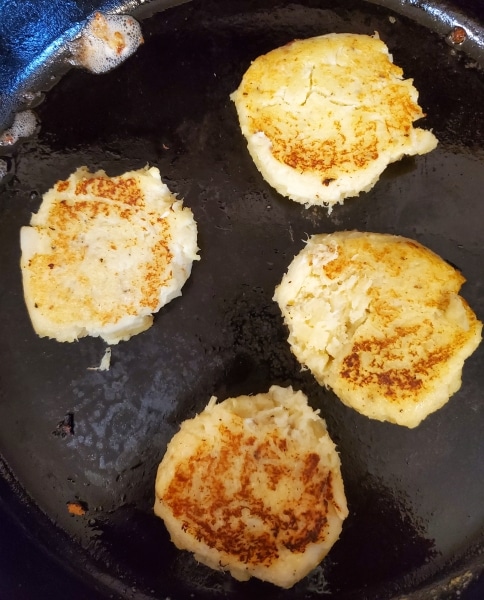
“Little” is the key word. I initially used too much butter (it was only a tablespoon!), and it made my first batch greasy. I ended up having to wipe out the pan with a paper towel before I could achieve the “delicate brown” color.
Serve hot.

Now I have a question: will this dish live up to Henderson’s statement: “This is undoubtedly the best manner of cooking parsnips”?
I’m not sure initially. The filling is a little too soft for my taste (one too many eggs?), and it needs something, maybe garlic. However, reheating the fritters in the toaster oven the next day improves the texture, and the addition of a sunny-side-up egg to top each fritter finally allowed the dish to reach parsnip excellence.


